Recent Articles
Popular Makes
Body Types
2017 Honda-CR-V vs 2017 Hyundai Tucson: Which is Best?
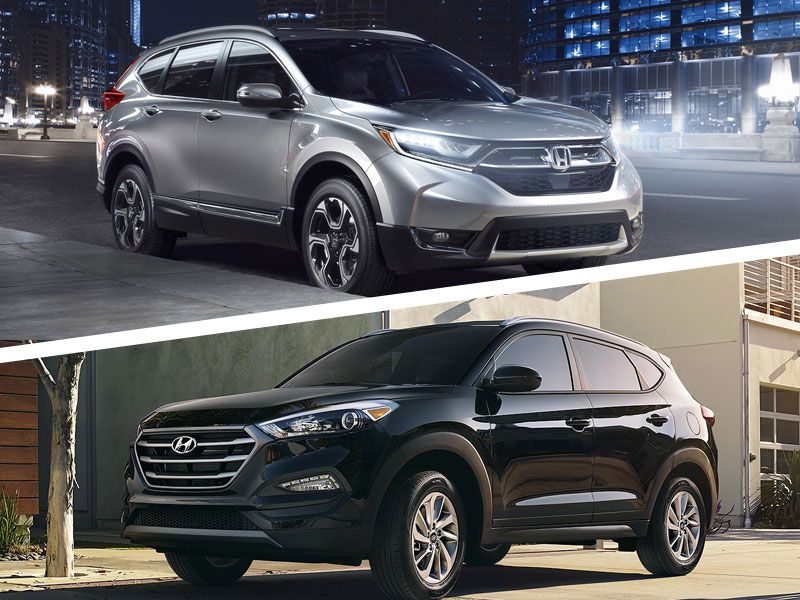
2017 Honda CR V vs Hyundai Tucson
The battle is fierce for the compact crossover crown. While the Honda CR-V has led the pack for years, the 2017 Hyundai Tucson is one of the leading contenders nipping at the CR-V's heels. This comparison will look at the full range for each model, with a focus on the top-of-the-line offerings. The CR-V was introduced to America two decades ago and entered its fifth generation with the 2017 model year. It’s now the middle child in the Honda crossover lineup, slotting between the subcompact HR-V and three-row Pilot. The Hyundai Tucson was introduced in the 2005 model year and is currently in its third generation, with a full revision in 2016. It’s the smallest crossover in the Hyundai lineup. Let see how they match up.
Exterior Styling and Trim Levels
Both the CR-V and Tucson are sleek modern crossovers with similar silhouettes. While styling is a subjective topic, the Tucson’s bold front fascia delivers more presence, and the lines have a more premium feel. The 2017 CR-V is offered in four trim levels: LX ($24,045), EX ($26,795), EX-L ($29.295), and Touring ($32,495). The 2017 Hyundai Tucson is offered in seven trim levels: SE ($22,700), SE Plus ($26,750), Eco ($24,150), Value Edition ($26,550), Sport ($25,900), Night ($27,800), and Limited ($29,775). Tucson. It's trim levels provide more opportunity to stand out from the crowd.
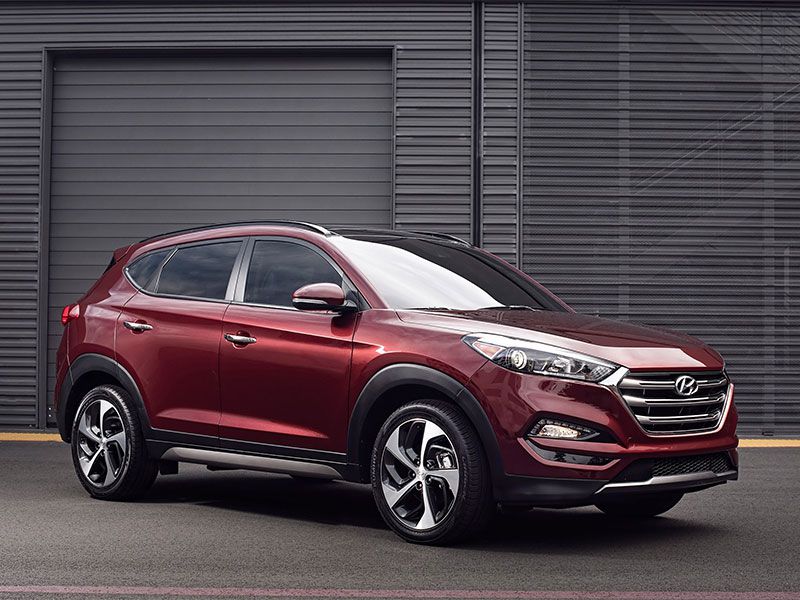
Photo by Hyundai
Interior
The 2017 CR-V Limited’s cabin sets a new standard for the class, with a brilliant design, along with excellent fit and finish. Design is subjective, but we’d give the edge to Honda for the overall look and feel, as well as the quality of materials. That said, the 2017 Tucson Limited offers some unique features that the CR-V does not. Opting for the Ultimate option package adds a panoramic sunroof, ventilated front bucket seats, and heated rear seats. CR-V. When it comes to creature comforts at the high end, the Tucson has the advantage, but the CR-V has the better interior, overall.
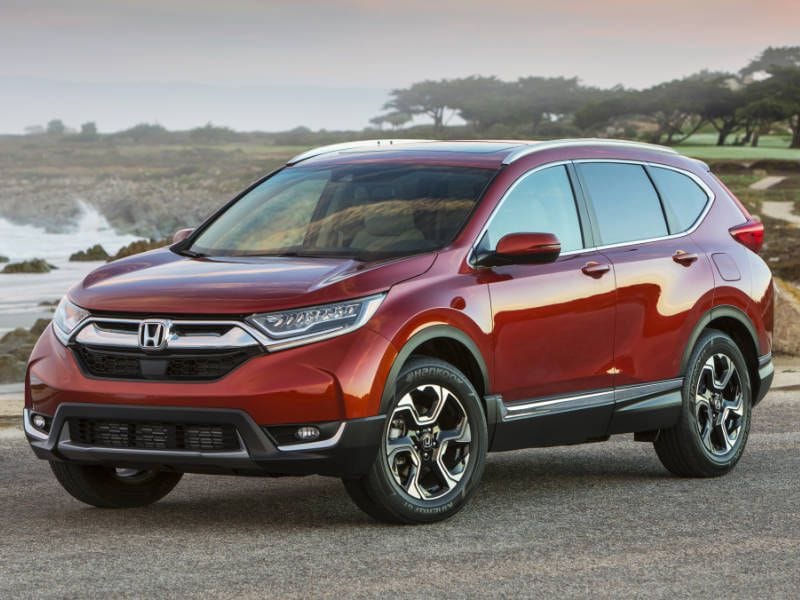
Photo by Honda
Cabin Volume
Both the CR-V and Tucson offer roomy interiors. CR-V’s second row provides 38.3 inches of headroom, 40.4 inches of leg room, and 55.6 inches of shoulder room. The Tucson’s second row allows for 39.2 inches of headroom, 38.2 inches of leg room, and 55.5 inches of shoulder room. The CR-V’s cargo area leads the compact crossover class, with 39.2 cubic feet of space behind the 60/40 split bench seat and 75.8 cubic feet with the seat folded down. The two-level floor provides extra storage space. The Tuscon has 31 cubic feet of space available behind the rear seats, and a total of 61.9 cubic feet of storage with the 60/40 seats folded down. Both the CR-V and offer hands-free lift gates to ease loading chores. CR-V, based on overall cargo volume.
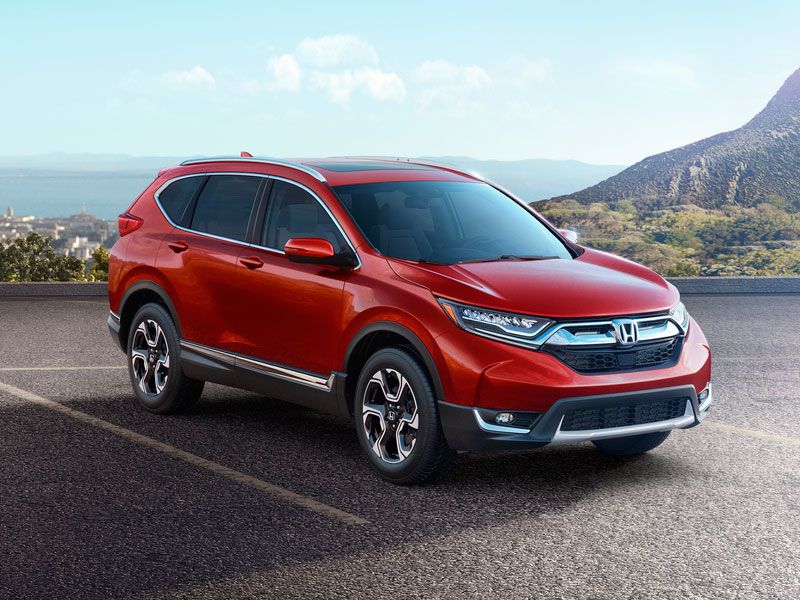
Photo by Honda
Infotainment
The CR-V and Tucson infotainment systems are closely matched, with Apple CarPlay and Android Audio support offered in both vehicles. The CR-V Touring model includes a nine-speaker 360-watt premium audio system with a seven-inch touchscreen, while the Tucson Limited is equipped with an Infinity premium audio system and an eight-inch touchscreen. The AAA Foundation for Traffic Safety recently commissioned researchers at the University of Utah to determine the visual and cognitive demands of auto infotainment systems. Although the researchers did not test the Tucson or CR-V, they found that the similar system in the Hyundai Santa Fe Sport placed a moderate demand on the driver's attention, while the system in the Honda Civic required a high demand. Tucson.
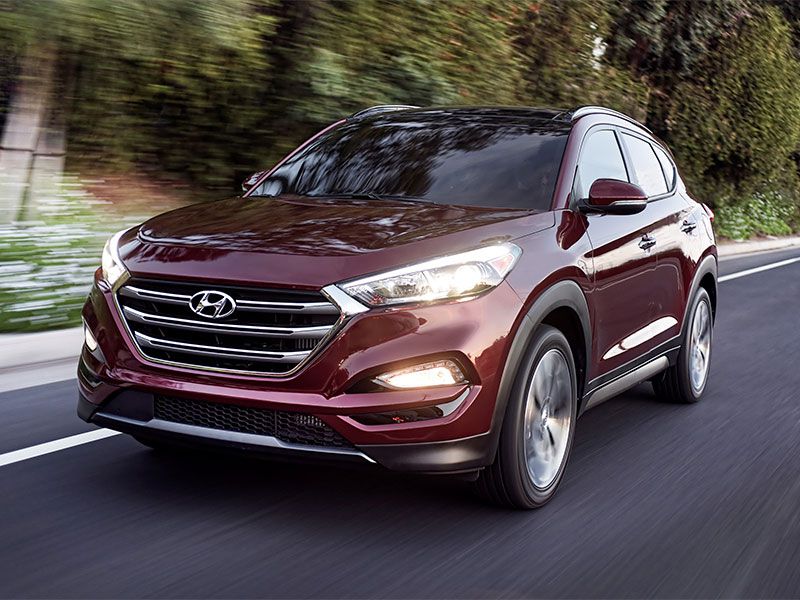
Photo by Hyundai
Safety
The Insurance Institute for Highway Safety (IIHS) has named the 2017 CR-V a Top Safety Pick+ when equipped with LED headlights and the Honda Sensing safety suite, which are standard features on the Touring model. The IIHS rates the 2017 Tucson a Top Safety Pick when equipped with optional front crash prevention. The National Highway Transportation Safety Administration (NHTSA) rates the both the 2017 Honda CR-V and Hyundai Tucson five stars overall, with four stars in the rollover test. Both vehicles offer advanced safety technology, including adaptive cruise control, lane departure warning, and blind spot mirrors. Given the identical ratings, this one’s a tie.
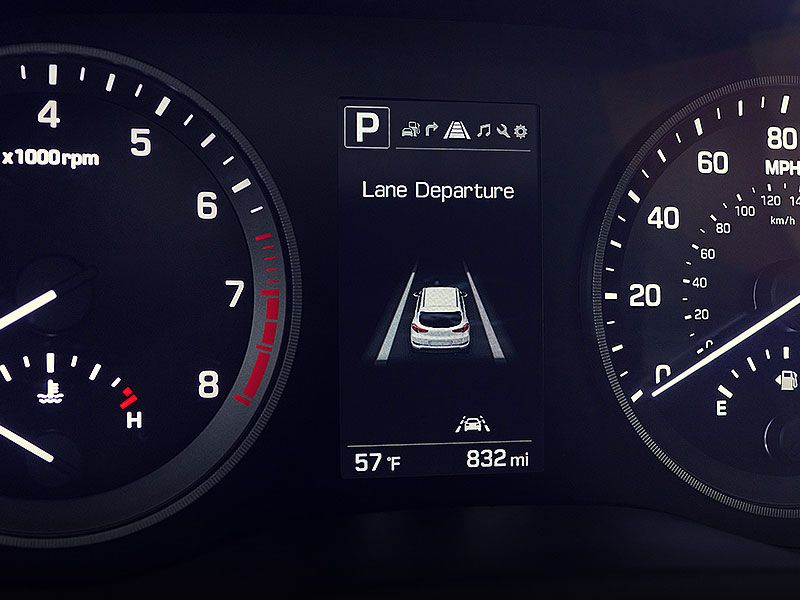
Engine and Transmission
CR-V and Tucson drivetrains vary depending on trim level. The base CR-V LX is equipped with a naturally aspirated 2.4-liter engine that produces 184 horsepower (HP) and 181 pound-feet of torque. All other trim levels are fitted with a turbocharged 1.5-liter four. A CVT transmission is used throughout the line. The 1.5T delivers 190 HP and 179 pound-feet of torque. The Tuscon SE and SE Plus are equipped with a 2.0-liter inline four (164 HP / 175 pound-feet of torque) mated to a conventional six-speed automatic transmission. All other models are fitted with a turbocharged 1.6-liter inline four mated to a seven-speed dual-clutch automatic. The 1.6T produces 175 HP and 195 pound-feet of torque.
This one’s a tough decision. If you prefer torque over horsepower and the feel of quick traditional gear changes, you’ll opt for the Tucson.
Tucson.
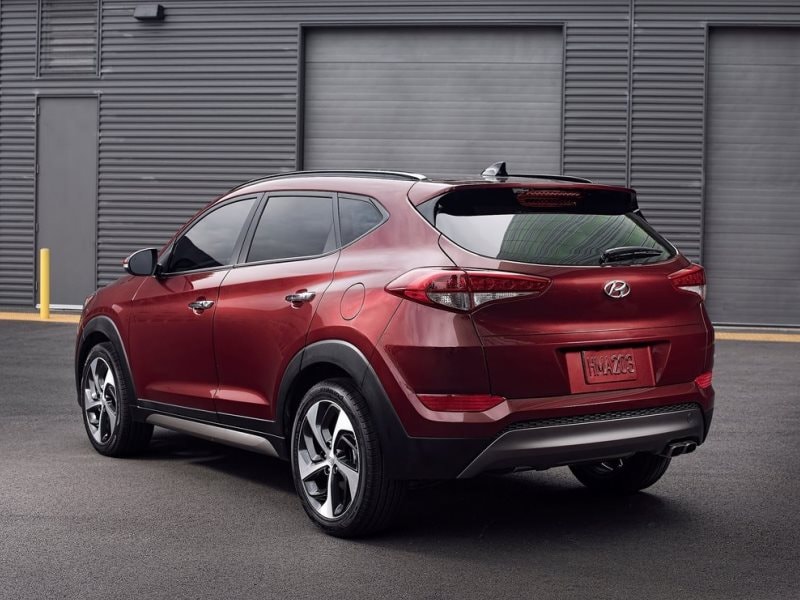
Photo by Hyundai
Fuel Efficiency
Gas mileage is dependent on trim level. The turbocharged 1.5-liter 2017 CR-V is EPA rated at 28 city / 34 highway / 30 combined miles per gallon (MPG) with front-wheel-drive (FWD) and 27 city / 33 highway / 29 combined MPG with all-wheel-drive (AWD). The 2.4-liter 2017 CR-V is EPA rated at 26 city / 32 highway / 28 combined MPG with FWD and 25 city / 31 highway / 27 combined MPG with AWD. The Eco trim level is the most fuel-efficient Tucson, scoring an EPA rating of 26 city / 32 highway / 28 combined MPG with FWD and 25 city / 31 highway / 27 combined MPG with AWD. The 2.0-liter 2017 Tucson is EPA rated at 23 city / 30 highway / 26 combined MPG with FWD and 24 city / 28 highway / 25 combined MPG with AWD. While the Tucson’s larger 16.4-gallon fuel tank provides more cruising range than the CR-V’s 14.0 gallon tank, score this one for the CR-V.
CR-V
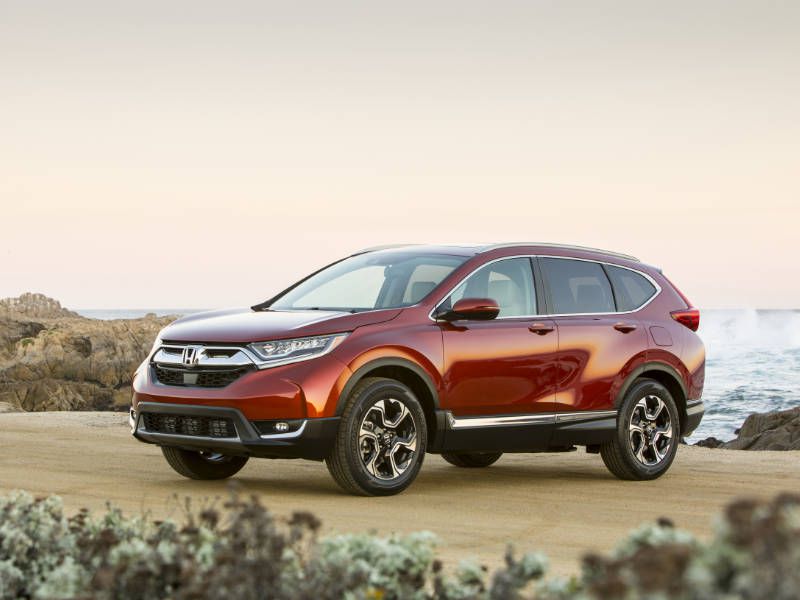
Photo by Honda
Ride and Handling
Both the CR-V and Tucson use a similar suspension design, with independent struts up front, multi-link rear suspension, and coil springs all around. Both vehicles use power electric rack and pinion steering systems and deliver a quiet ride. While the CR-V and Tucson are well-mannered and pleasant to drive, neither vehicle is particularly sporty. If twisty roads are your thing, you’ll want to test drive the Mazda CX-5 against the pair. Slight edge to the CR-V.
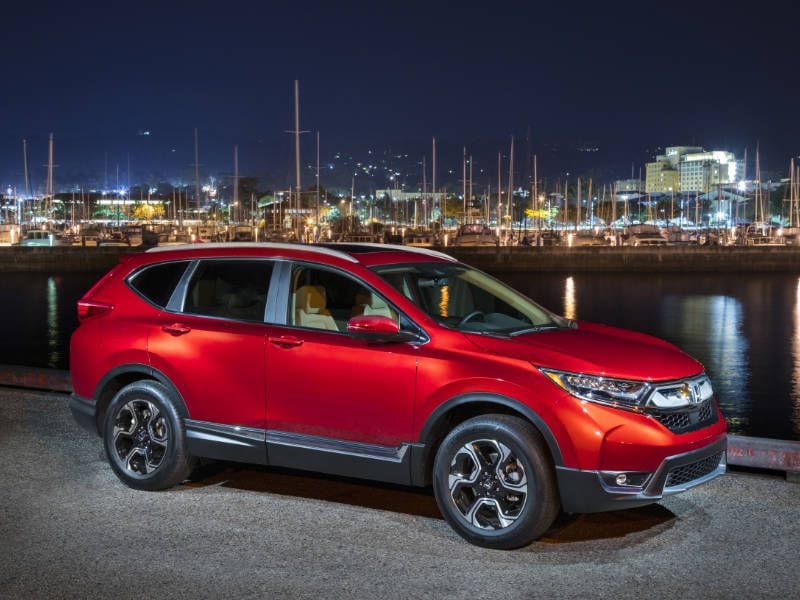
Photo by Honda
Warranty
Warranties aren’t a huge factor when leasing for the short term, but if you’re buying (and holding for the long run), the difference is considerable. The 2017 Honda CR-V is covered by a 36 month / 36,000 basic warranty, along with a 60 month / 60,000 mile powertrain warranty. The 2017 Hyundai Tucson benefits from a 60 month / 60,000 mile warranty and a 120 month / 100,000 mile powertrain warranty. Corrosion perforation miles are unlimited in both vehicles, with the Tucson covered for 84 months and the CR-V covered for 60 months. The Tucson’s more generous warranty offers a significant advantage.
Tucson
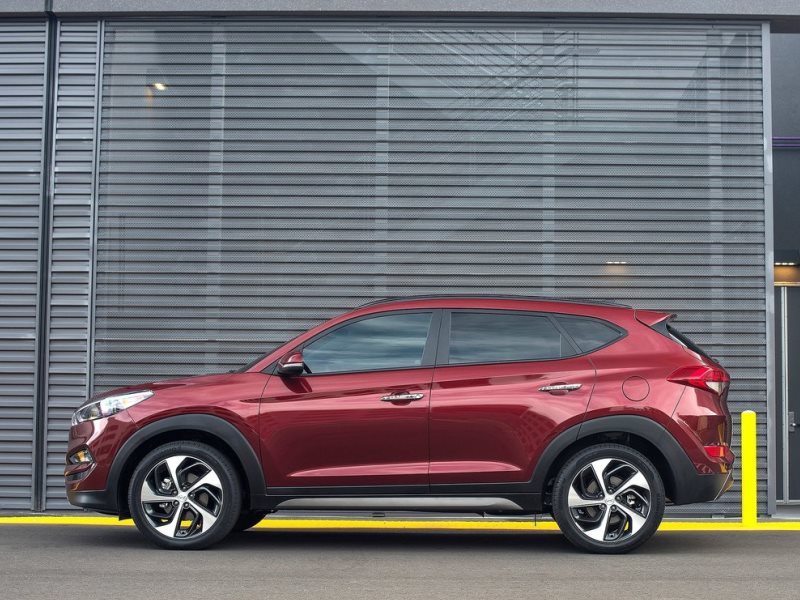
Photo by Hyundai
Value
The Tucson offers the most affordable front-wheel-drive entry point, with the base SE priced at $22,700, compared to the CR-V LX at $24,045. It’s also priced lower at the high end, with the Limited at $29,775 and the CR-V Touring at $32,495.
The Tucson’s Ultimate Package ($2,750) adds HID headlamps with dynamic bending light, lane departure warning, a panoramic sunroof, ventilated front seats, and heated rear seats, among other features.
The CR-V Limited does not have a similar option package. While much of this decision comes down to the initial purchase price you negotiate with the dealer (and the amount of cash on the hood), industry statistics show the CR-V to have a higher residual value than the Tucson. CR-V.
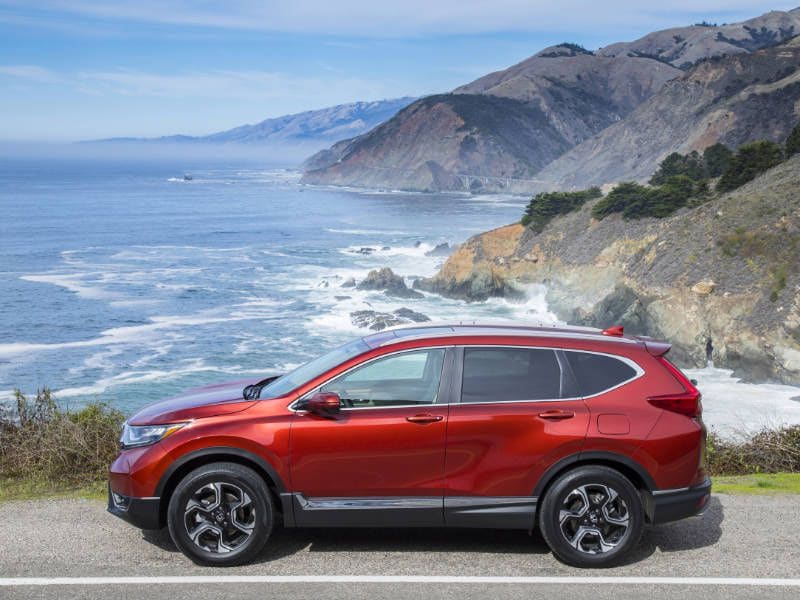
Photo by Honda